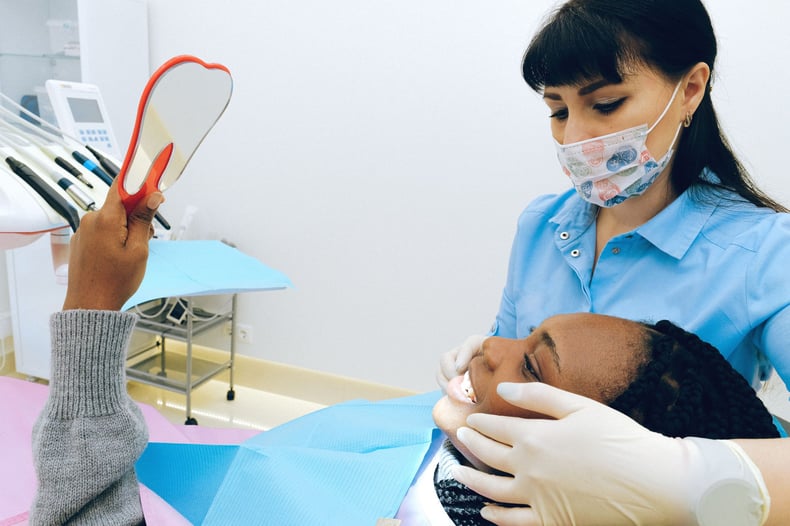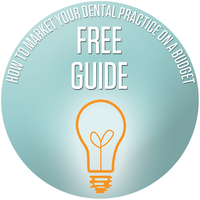 It is vitally important to practice infection control in any dental office. Cross-contamination can occur between a variety of people and tools. Exposure to blood, as well as other bodily fluids and microorganisms within the mouth and respiratory tract can cause infections. This presents in both practitioners and patients, which makes infection control in dentistry essential.
It is vitally important to practice infection control in any dental office. Cross-contamination can occur between a variety of people and tools. Exposure to blood, as well as other bodily fluids and microorganisms within the mouth and respiratory tract can cause infections. This presents in both practitioners and patients, which makes infection control in dentistry essential.
Key takeaways:
- While infection transmission is rare, infections can be life-threatening to you, your staff, and your patients
- Infections that do happen are caused by breakdowns in basic infection prevention processes
- Infection control must be approached from several angles, including administrative measures that provide consistently reinforced education
- The CDC has outlined standard precautions as well as other appropriate measures
The Centers for Disease Control and Prevention (CDC) reports that infection transmission is rare in dental settings. However, the transmissions that do occur are due to the breakdown of basic infection prevention methods. These include unsafe injection practices, lack of heat sterilization of dental handpieces, and failure to conduct spore testing on autoclaves, among other issues.
Infection prevention must be a priority in dental offices. There are plentiful opportunities for cross-contamination and infection transmission to occur in dental settings. This is why the CDC has developed guidelines not only for infection control but for basic safe care expectations.
So, what can you do, as a dental professional, to prevent infections? Administrative measures, training, and standard precautions all play a part. Read on for more.
Administrative measures for infection control
Everyone in your office must participate in infection control dentistry. Additionally, you will need to appoint an “infection prevention coordinator” to oversee the efforts. They will be responsible for developing policies and procedures based on evidence-based guidelines. This coordinator can be tasked with ensuring all necessary equipment and supplies are available. And they will be the sole source of truth for any issues or concerns regarding infection prevention.
A policy should be put into place to detect and manage patients who might be infectious when they visit your dental office. Recommendations include the following:
- Create and maintain programs for infection prevention and occupational health.
- Adhere to standard precautions by ensuring hand hygiene products, safety devices, and personal protective equipment are available.
- Appoint at least one person trained in infection prevention to coordinate the program.
- Establish and maintain written policies and procedures for infection prevention.
- Develop a system to detect and manage potentially infectious people.
It is recommended that infection prevention training be conducted for all employees and independent contractors. This training should be provided during orientation as well as at regular intervals. Your infection prevention program must address the occupational health needs of all dental health care personnel (DHCP).
DHCP Safety
Patients are at risk from poor infection control, but so are you and your staff. Infection transmission can happen from dentist to patient or patient to dentist. Any infection prevention program is not complete unless it addresses the health needs of your employees. Key CDC recommendations include:
- Following current CDC recommendations for immunizations, evaluation, and follow-up.
- Screening all DHCP for tuberculosis
- Putting in place referral arrangements to qualified professionals so that post-exposure is managed.
- Developing policies that govern personnel with potentially transmissible conditions and patient contact.
Other steps you can take include conducting periodic observational assessments, developing checklists, and performing a routine review of exposures to bloodborne pathogens. DHCP safety includes adherence to standard precautions.
The standard precautions
Standard precautions outline bare minimum prevention practices. These apply to all patient care in all healthcare settings. Designed to protect DHCP and prevent them from spreading infections, these precautions include:
- Hand hygiene – Hand washing with soap and water and using alcohol-based hand sanitizer.
- Using personal protective equipment – gloves, masks, eyewear, and gowns.
- Practicing respiratory hygiene and cough etiquette.
- Using sharps safety precautions.
- Employing safe injection practices.
- Using sterile devices and instruments.
Environmental surfaces should also be cleaned and disinfected. Training and education are vital elements of the standard precautions – they help DHCP make the right decisions and increase compliance.
Another area of concern is the water lines that connect to high-speed handpieces, air and water syringes, and ultrasonic scalers. These waterlines are prime places for bacterial growth since they have long, narrow tubing, inconsistent rates of flow, and can retract oral fluids. All water used should meet drinking water standards. During surgical procedures, sterile solutions should be used that bypass dental unit waterlines.
Improving infection control
Infection control in dentistry is essential to keep you, your staff, and your patients safe. Infections can be transmitted in several ways:
- Direct contact with oral fluids, blood, or other infected items
- Indirect contact with instruments, surfaces, or equipment that is contaminated
- Contact with nasal or oral mucus from an infected person via coughing or sneezing
- Inhaling airborne microorganisms
Preventing infections takes the participation of everyone in your office. Infection control procedures must include patient screening, strict personal hygiene, personal protective equipment, proper sterilization procedures, and surface cleaning, at minimum. It is also recommended to take these steps when treating patients:
- Clean the chair and room with a disinfectant solution that is left to dry for at least 10 minutes.
- Cover the chair with plastic that is removed after each patient.
- Have each patient rinse with chlorhexidine gluconate before being treated.
Also, you should wash your hands before gloving, and once gloved, only the patient and areas that have been cleaned and disinfected should be touched. The dentist should not leave the room without removing barrier garments and gloves.
Lack of infection control is life-threatening. You should consider all your patients as if they are at elevated risk to both transmit and acquire infectious diseases. Attention should also be paid to cross-contamination and patient-to-patient transmission. Addressing these issues involves following established guidelines to safeguard both patients and staff. You, your staff, and your patients will be thankful that these measures are in place.



